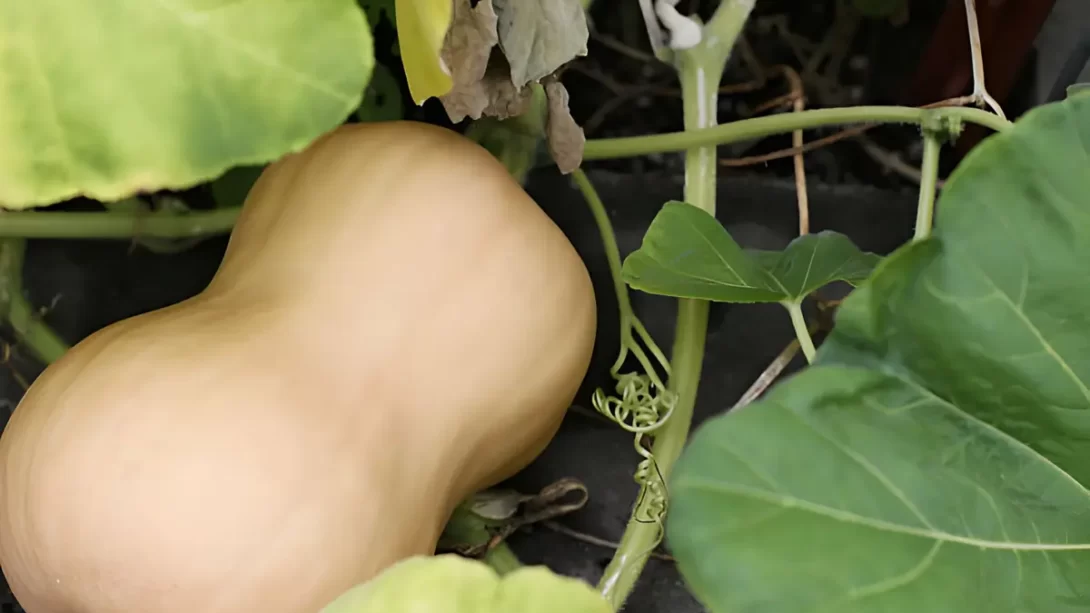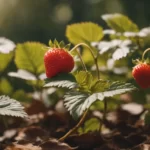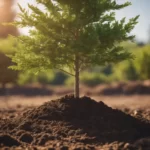Butternut squash, with its sweet, nutty flavor, is a favorite in autumn kitchens. Known for its versatility in recipes ranging from soups to casseroles, it’s a staple in many diets. The key to its rich flavor and ideal texture lies in the timing of the harvest. This article provides essential guidance on when and how to pick butternut squash, ensuring you harvest your squash at the peak of perfection.
Butternut Squash Growth
Butternut squash (Cucurbita moschata) is a winter squash known for its long, bell-like shape and smooth, tan skin. The growth process of butternut squash is fascinating, starting from a seed and developing through a series of stages. After planting, the seeds germinate, and vines grow, eventually flowering and setting fruit. The squash matures on the vine over a period of several months, undergoing significant changes in size, color, and hardness.
Ideal Conditions for Growing Butternut Squash
For optimal growth, butternut squash requires warm, sunny conditions with well-draining soil. The plants thrive in soil with a pH between 6.0 and 6.8 and require consistent moisture, especially during the fruit-setting and growing stages. Adequate space is crucial, as the vines can spread quite extensively. Providing the right conditions is essential for developing squash that is rich in flavor and suitable for storage.
Signs of Maturity in Butternut Squash
Identifying when butternut squash is ready to be harvested is key to ensuring its quality and flavor. Mature butternut squash typically has a hard, tough skin that resists puncture by a fingernail. The color deepens to a uniform tan or beige, without any green patches. Additionally, the squash should feel heavy for its size, indicating fully developed flesh inside. The vines and stems often start to wither and turn brown as the squash reaches maturity, which is another visual cue for readiness.
Harvest Timing
The general timeline for harvesting butternut squash varies depending on planting time and local climate conditions. In most regions, squash is ready for harvest by late summer or early fall, typically 3 to 4 months after planting. It’s important to pick the squash before the first hard frost, as frost can damage the fruit and reduce its storage life. Monitoring the squash as it nears the typical harvest period is essential to choosing the right moment to pick.
Harvesting Methods
Harvesting butternut squash correctly is vital to avoid injuring the fruit and the plant. Use a sharp knife or pruning shears to cut the stem about an inch above the fruit. This stem “handle” helps to prevent premature rotting during storage. Handle the squash gently to avoid bruises or cuts, which can also lead to decay. It’s important not to pull or twist the squash off the vine, as this can cause damage to both the squash and the vine.
Post-Harvest Handling and Curing
After harvesting, butternut squash requires proper handling and curing for optimal flavor and longevity. Curing involves storing the squash in a warm (about 80-85°F), dry place for about 10 to 14 days. This process allows the skin to harden further and wounds to heal, which is essential for long-term storage. Once cured, remove any soil or debris from the squash with a soft brush, being careful not to break the skin.
Storage Tips for Butternut Squash
Proper storage is crucial to extend the shelf life of butternut squash. Store cured squash in a cool (50-60°F), dry place with good air circulation. Ideal storage locations include a basement, root cellar, or a cool pantry. Properly stored, butternut squash can last for several months. Keep an eye out for signs of spoilage, such as soft spots, mold, or an off smell, and use any affected squash promptly.
Common Challenges in Harvesting
Gardeners often face challenges such as pests, diseases, and variable weather when growing butternut squash. Common pests like squash bugs and vine borers can be mitigated through organic methods or insecticides. Fungal diseases require proper air circulation and moisture control. Unpredictable weather, especially early frosts, can harm the squash, so it’s important to monitor weather forecasts closely as the harvest season approaches.
Conclusion
Harvesting butternut squash at the right time is key to enjoying its rich flavor and ensuring a long storage life. Recognizing the signs of maturity, employing the correct harvesting methods, and following proper post-harvest handling and storage practices are essential steps. With these guidelines, gardeners can successfully harvest and store butternut squash, enjoying this versatile and delicious vegetable well into the winter months.



